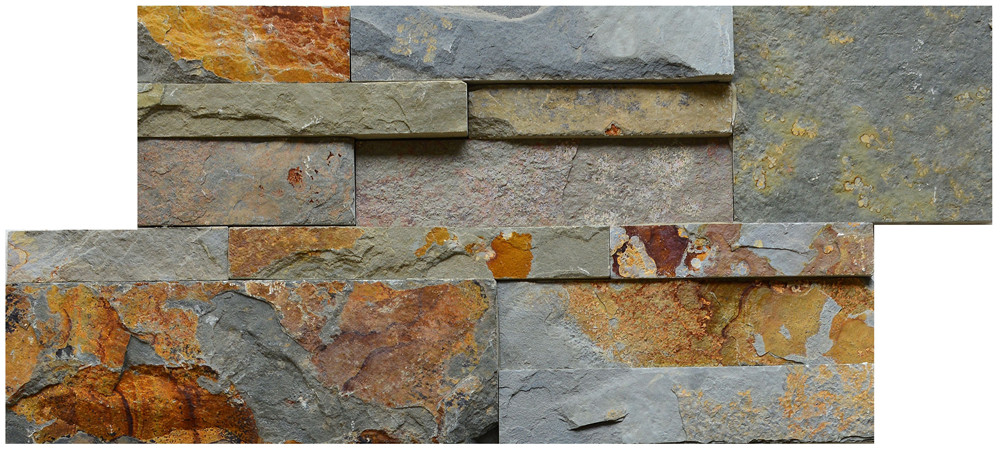Enhancing Aesthetics and Durability with Stone Veneer Pillars

Introduction:
Stone veneer pillars have become increasingly popular in modern architectural design, thanks to their ability to enhance the visual appeal of various structures while providing durability and longevity. These pillars offer a cost-effective alternative to natural stone, embodying both elegance and strength. This article explores the beauty, versatility, and practicality of stone veneer pillars, shedding light on their installation process, benefits, and maintenance requirements.
Section 1: Understanding Stone Veneer Pillars
1.1 What are Stone Veneer Pillars?
Stepping stone placement for strategic layout are artificial stone structures designed to mimic the appearance and texture of natural stone. Comprised of a thin layer of stone adhered to a sturdy core material, such as concrete or fiberglass, these pillars offer the aesthetics of natural stone at a fraction of the cost.
1.2 Types of Stone Veneer Materials
Stone veneer pillars can be crafted using various materials, each providing a unique look and feel. Some popular options include:
- Manufactured Stone Veneer: Made from a blend of natural stone aggregates, cement, and color pigments, these panels offer a wide range of textures and colors.
- Natural Stone Veneer: Derived from real stone quarries, these thin slices of natural stone retain the authentic beauty and texture of their natural counterparts.
- Fiber Reinforced Concrete (FRC) Panels: Combining the strength of concrete with the aesthetics of stone, FRC panels offer enhanced durability and are resistant to weathering and cracking.
Section 2: The Benefits of Stone Veneer Pillars
2.1 Aesthetics and Versatility
Stone veneer pillars provide an impressive visual impact, adding a touch of elegance and sophistication to any architectural design. With a wide range of textures, colors, and patterns available, they can complement both traditional and contemporary styles, making them suitable for residential, commercial, and public spaces.
2.2 Cost Savings
Compared to natural stone pillars, stone veneer pillars offer significant cost savings, making them an attractive option for homeowners and builders on a budget. The reduced weight of these structures also contributes to lower transportation and installation costs.
2.3 Durability and Longevity
Stone veneer pillars are designed to withstand the test of time. The core materials used in their construction provide stability and strength, while the stone veneer layer offers resistance to fading, cracking, and weathering. These pillars are highly durable and require minimal maintenance, making them an ideal choice for outdoor applications.
2.4 Lightweight and Easy Installation
One of the key advantages of stone veneer pillars is their lightweight nature, which simplifies transportation and installation. Unlike natural stone, they do not require extensive structural support, reducing the complexity and costs associated with labor and construction.
Section 3: Installation Process of Stone Veneer Pillars
3.1 Preparing the Surface
Before installing stone veneer pillars, it is essential to prepare the surface properly. This involves cleaning the substrate, removing any loose debris, and ensuring a smooth and level base for the pillars.
3.2 Applying the Adhesive
A high-quality adhesive specifically designed for stone veneer applications is applied to the surface, providing a secure bond between the pillar and the substrate. The adhesive should be chosen based on the specific requirements of the project and the type of stone veneer being used.
3.3 Attaching the Pillars
The stone veneer pillars are carefully positioned and secured to the substrate, following the adhesive manufacturer's instructions. The installation process may involve aligning the pillars, adjusting their levelness, and ensuring proper spacing for a visually appealing result.
3.4 Grouting and Sealing
Once the pillars are firmly in place, grout is applied to fill any gaps between them, creating a seamless appearance. Proper sealing is then performed to protect the stone veneer from moisture, staining, and discoloration, ensuring its longevity and preserving its original beauty.
Section 4: Maintenance of Stone Veneer Pillars
4.1 Cleaning and Regular Maintenance
Stone veneer pillars require minimal maintenance, making them an excellent choice for busy homeowners and commercial properties. Regular cleaning with a mild detergent and water solution, followed by rinsing, is usually sufficient to keep them looking pristine. Avoid using abrasive cleaners or tools that may scratch the surface.

4.2 Repairing Damages
In the event of any damages, such as chipping or cracking, it is crucial to address them promptly. Repairing stone veneer pillars typically involves using an appropriate adhesive or filler to restore the integrity and appearance of the affected area. Consult a professional if major repairs are required.
4.3 Protection from the Elements
While stone veneer pillars are highly durable, it is advisable to protect them from excessive exposure to harsh weather conditions. Regular inspections can help identify any signs of damage or erosion and allow for timely maintenance, prolonging the lifespan of the pillars.
Conclusion:
Stone veneer pillars offer a perfect blend of aesthetics, versatility, and durability, making them an attractive choice for enhancing the architectural appeal of various structures. Their cost-effective nature, easy installation process, and minimal maintenance requirements make them a popular alternative to natural stone. Whether used in residential or commercial settings, stone veneer pillars provide a timeless elegance that elevates the overall visual impact of any design. With proper installation and maintenance, these pillars can withstand the test of time, providing years of beauty and functionality.
